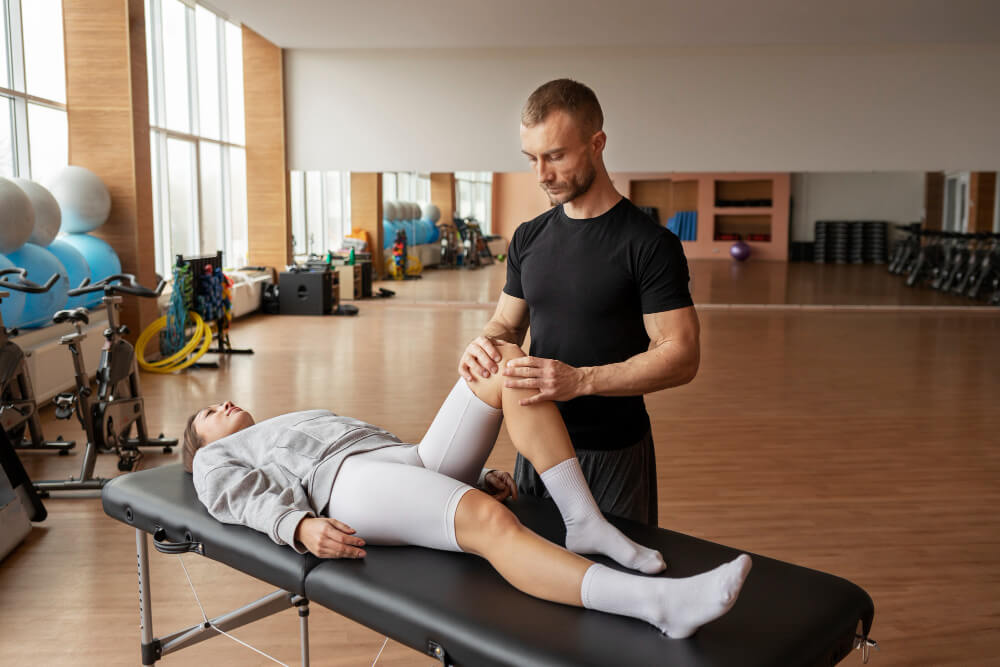Beyond the Bench: Pain Management Strategies for Optimal Recovery from Sports Injuries
Sports are a powerful force, fostering physical fitness, mental resilience, and a sense of community. However, the pursuit of athletic glory can sometimes come at a cost – sports injuries. Whether it’s a sprained ankle, a pulled muscle, or a more serious fracture, injuries can sideline athletes and disrupt their training.
This article sheds light on sports injuries and pain management, equipping you with the knowledge to navigate the road to recovery. By understanding the different types of injuries and the importance of early intervention, you can work with your healthcare team to develop a personalized pain management plan that gets you back to peak performance.
Understanding Sports Injuries: Common Culprits and Impact
Sports injuries can affect various parts of the body and range from mild to severe. Here’s a breakdown of some common types:
Overuse Injuries:
These develop gradually due to repetitive stress on a particular body part. Examples include:
- Tendonitis: Inflammation of a tendon, the tissue that connects muscle to bone.
- Bursitis: Inflammation of a bursa, a fluid-filled sac that cushions joints.
- Stress fractures: Tiny cracks in a bone caused by repetitive stress.
Acute Injuries:
These occur suddenly due to a specific event, such as a fall or a collision. Examples include:
- Sprains: Ligament tears, often affecting ankles and knees.
- Strains: Muscle tears, causing pain and limiting movement.
- Dislocations: Bones forced out of their normal position in a joint.
The impact of a sports injury goes beyond physical pain. It can affect an athlete’s emotional well-being, motivation, and training schedule. Early intervention and effective pain management are crucial to minimize these disruptions and promote a swift and successful recovery.
Beyond Rest and Ice: The Importance of Early Intervention
When a sports injury strikes, time is of the essence:
- Prompt Evaluation: Seeking medical attention promptly allows for an accurate diagnosis and the development of a tailored treatment plan.
- Early Intervention: Early intervention with pain management techniques like RICE (Rest, Ice, Compression, Elevation) and physical therapy can minimize inflammation, promote healing, and prevent complications.
- Preventing Complications: Early diagnosis and treatment can prevent complications like chronic pain, muscle weakness, or joint instability.
The Multifaceted Approach to Pain Management for Athletes
Effective pain management for sports injuries goes beyond simply taking pain medication. It’s a comprehensive approach that addresses both the physical and emotional aspects of recovery:
RICE Therapy:
This cornerstone of pain management helps reduce inflammation and swelling:
- Rest: Avoid activities that aggravate the injury.
- Ice: Apply ice packs to the injured area for 15-20 minutes at a time, several times a day.
- Compression: Use an elastic bandage to provide gentle support and minimize swelling.
- Elevation: Elevate the injured limb above the heart level whenever possible.
Physical Therapy:
A physical therapist plays a crucial role in sports injury recovery:
- Rehabilitation Exercises: These exercises help restore strength, flexibility, and range of motion in the injured area.
- Balance and Proprioception Training: Improving balance and proprioception (awareness of body position) can help prevent future injuries.
- Modality Therapy: Techniques like ultrasound or electrical stimulation can promote healing and pain relief.
Pain Medication:
Over-the-counter pain relievers like ibuprofen or acetaminophen can help manage pain and inflammation. In some cases, stronger pain medication might be prescribed by a healthcare professional. However, it’s crucial to prioritize other pain management strategies and use medication judiciously.
Mind-Body Techniques:
Strategies like meditation, yoga, and relaxation techniques can help manage stress, anxiety, and pain perception:
- Stress Reduction: Stress can exacerbate pain. Techniques like meditation can help athletes manage stress and promote healing.
- Pain Management Skills: Mindfulness exercises can help athletes develop coping with the pain and its management for wee-being.


